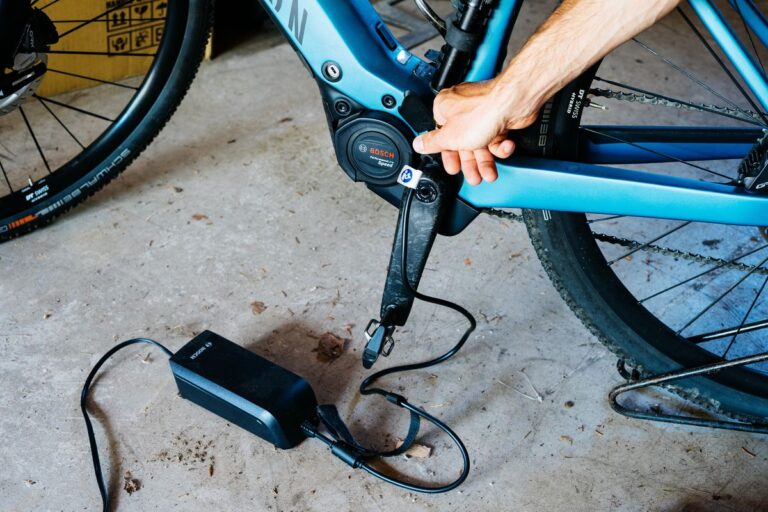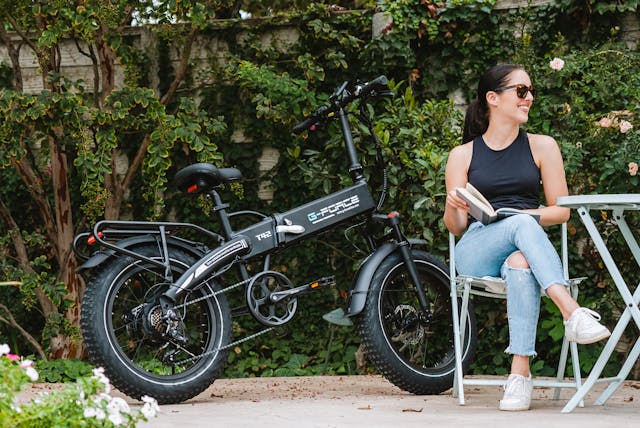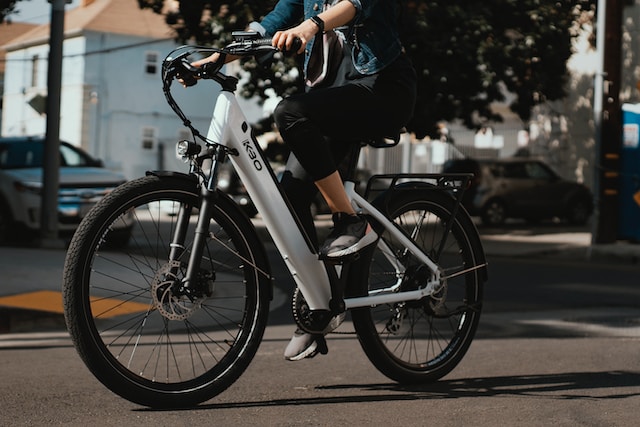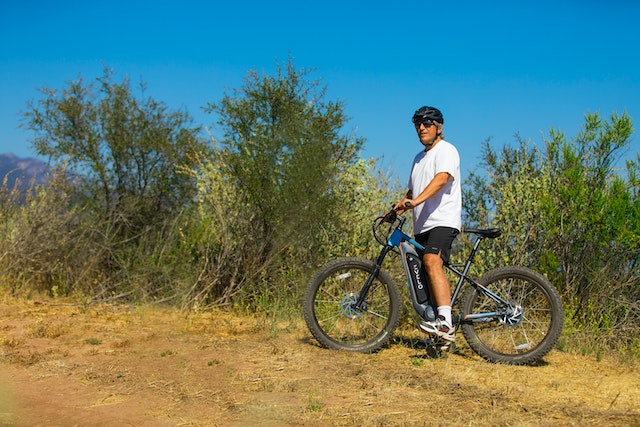Easy DIY Electric Bike Conversions – A How-To Guide For Beginners
Just getting started with electric bike conversions? Look no further. This comprehensive guide is designed for beginners looking to transform their regular bikes into eco-friendly, efficient electric rides. From selecting the right kit to installing it safely and effectively, we’ll walk you through each step with clear instructions and tips. Join the green revolution and upgrade your cycling experience with this easy DIY project.
Key Takeaways:
- Electric bike conversion kits are a cost-effective way to turn your regular bicycle into an electric bike.
- Choose the right kit that suits your bicycle type and riding needs for a successful conversion.
- Basic mechanical skills are required, but the conversion process is relatively simple for beginners.
- Ensure safety by following the manufacturer’s instructions and wearing proper protective gear during the conversion.
- Test the converted e-bike thoroughly before regular use to check for any issues and ensure a safe riding experience.
- Enjoy the benefits of having an electric bike, such as assistance in pedaling, extended range, and easier travel on uphill terrain.
- Join the e-bike community and share your experience with fellow enthusiasts for tips, tricks, and support.
Planning Your Electric Bike Conversion
There’s nothing quite like the feeling of cruising around on an electric bike that you’ve built yourself. Planning your electric bike conversion is the crucial first step to ensure a successful project. From considering factors before starting to choosing the right bicycle for conversion, this guide will walk you through the necessary steps.
Factors to Consider Before Starting
Before plunging into your electric bike conversion project, there are several factors to consider. Firstly, evaluate your skill level when it comes to working with tools and electronics. Next, assess your budget for the conversion, including the cost of the kit and any additional tools you may need. Additionally, think about where you will do the conversion work and if you have access to the necessary space and tools. Finally, consider your goals for the electric bike conversion project and what you hope to achieve with the result.
- Skill level
- Budget
- Workspace
- Goals
Any successful electric bike conversion starts with careful consideration of these key factors to ensure a smooth and enjoyable project experience.
RELATED CONTENT – Electric Bike Conversion for Folding Bikes
Choosing the Right Bicycle for Conversion
To begin your electric bike conversion journey, selecting the right bicycle is crucial. The ideal bicycle for conversion would be a sturdy and lightweight bike with a frame that can accommodate the necessary components. Look for a bike that has enough space to install the electric motor, battery, and controller without compromising the bike’s functionality. Consider the bike’s design and aesthetics as well, as you’ll want to enjoy riding your newly converted electric bike.
Consider the size of the bike frame and whether it will comfortably fit you and the electric components. Ensure that the bike’s brakes, gears, and overall condition are in good shape to support the added weight and power of the electric conversion kit. Any bike can be converted to electric power, but choosing the right bicycle will make the conversion process smoother and more successful in the long run.
Gathering the Necessary Tools and Parts
Little do-it-yourself enthusiasts rejoice! Converting your standard bicycle into an electric one is an achievable project that can be tackled with the right tools and parts. Before you start the conversion process, it’s crucial to gather all the necessary items to ensure a smooth and successful build.
Essential Tools for the Job
The first step in your electric bike conversion journey is to acquire the crucial tools needed for the job. These may include wrenches, screwdrivers, wire cutters, and a bike stand for easy maneuvering. Avoid using tools that are not suited for the job as improper tools can lead to damage or injury during the conversion process. Having the right tools at your disposal will make the conversion task much simpler and safer.
Additionally, investing in a quality multimeter is imperative for testing the electrical connections of your DIY electric bike. This tool will help you troubleshoot and ensure that all components are functioning correctly before hitting the road. Be mindful of, safety first – always wear protective gear such as gloves and safety glasses when working on your electric bike conversion.
Selecting the Right Electric Bike Kit
The key to a successful electric bike conversion lies in selecting the right electric bike kit for your specific needs. When choosing a kit, consider factors such as the motor type, battery capacity, and compatibility with your current bike frame. Opt for a reputable supplier that offers good customer support and a warranty, ensuring you have assistance if any issues arise during the installation process.
On top of that, consider the range and power you require from your electric bike. If you plan to use it for daily commuting or tackling hilly terrains, you may need a more powerful motor and battery combination. Research thoroughly and consult with experts or online forums to make an informed decision before purchasing your electric bike kit.
The Conversion Process: Step by Step
Once again, converting your regular bike into an electric one is a rewarding project that anyone can do with a bit of guidance. In this chapter, we will walk you through the step-by-step process of converting your bike into an electric one, covering everything from installing the electric motor to wiring and battery setup.
Installing the Electric Motor
Process: The first step in the conversion process is installing the electric motor onto your bike. Begin by removing the existing pedals and bottom brackets. Next, attach the motor to the bottom bracket using the appropriate mounting brackets. Ensure that the motor is securely fastened and aligned with the chain.
Once the motor is in place, you can connect it to the existing drivetrain of your bike. This may involve some adjustments to ensure that the motor and chain work together smoothly. Finally, double-check all connections to make sure everything is secure before moving on to the next step.
Tips for Wiring and Battery Setup
Process: When considering wiring and battery setup, it’s important to pay attention to detail to prevent any mishaps. Start by carefully routing the wires from the motor to the battery pack, making sure to secure them to the frame to avoid tangling or snagging. Connect the wires according to the manufacturer’s instructions, double-checking the polarity to avoid damaging the components.
Perceiving safety as a top priority, make sure to insulate all connections properly to prevent any short circuits. Additionally, position the battery pack securely on the frame, distributing the weight evenly to maintain balance while riding. Always use the recommended charger for your battery pack to ensure optimal performance and longevity.
With these tips in mind, you can navigate the wiring and battery setup with ease. Remember to follow the manufacturer’s instructions carefully and seek assistance if needed to ensure a safe and successful conversion process.
- Electric motor installation is crucial for the performance of your e-bike.
- Wiring should be done meticulously to prevent any electrical issues.
- Battery setup requires proper insulation and secure mounting to ensure safety.
Testing and Troubleshooting
Safety Checks and Initial Testing
Now that you have completed your electric bike conversion, it’s crucial to conduct safety checks before taking your bike out for a ride. Inspect the wiring to ensure there are no loose connections or exposed wires that could lead to a short circuit. Double-check the battery connections to make sure they are secure and in the correct polarity. Test the brakes to ensure they are responsive and can stop the bike effectively.
Any concerns about the safety of your electric bike should be addressed before test riding it. Start with short test rides in a controlled environment to ensure everything is functioning as it should. It’s better to be cautious and thorough in your initial testing to prevent any accidents or malfunctions while riding.
RELATED CONTENT – Why Does My Electric Bike Keep Cutting Out?
Troubleshooting Common Issues After Conversion
One common issue you may encounter after an electric bike conversion is problems with the motor such as a lack of power or strange noises. Check the motor connections and wiring to ensure everything is properly connected. If the issue persists, you may need to consult the motor manufacturer’s guidelines for troubleshooting tips.
One of the main challenges post-conversion is troubleshooting electrical issues. If your bike is experiencing electrical problems such as a dead battery or faulty throttle response, it’s crucial to check the wiring and connections thoroughly. Refer to your conversion kit’s instructions for guidance on how to address these issues effectively.
Testing and troubleshooting are integral parts of the electric bike conversion process. It’s important to thoroughly check all components before riding for your safety and the longevity of your electric bike. Keep in mind, safety always comes first when working with electric systems, so don’t hesitate to seek professional help if needed.
Maintenance and Care for Your DIY Electric Bike
Unlike traditional bicycles, electric bikes require a bit more attention to ensure optimal performance and longevity. Regular maintenance and care are important to keep your DIY electric bike running smoothly and safely. By following a few simple tips, you can extend the life of your electric bike and enjoy a hassle-free riding experience.
Routine Maintenance Tips
As far as routine maintenance for your DIY electric bike, there are a few key areas to focus on. Firstly, make sure to regularly check and inflate the tires to the recommended pressure. This not only improves your bike’s efficiency but also prevents unnecessary wear and tear on the tires. Secondly, keep the chain clean and lubricated to ensure smooth pedaling and minimize the risk of rust. Lastly, check the brake pads regularly and replace them if they show signs of wear to maintain optimal braking performance.
- Tire pressure: Regularly check and inflate to recommended pressure.
- Chain maintenance: Keep it clean and lubricated for smooth pedaling.
- Brake pads: Check regularly for wear and replace as needed.
The key to maintaining your DIY electric bike is to stay proactive and address any issues promptly. By following these routine maintenance tips, you can ensure that your electric bike stays in top condition for years to come.
Upgrades and Customizations for Enhanced Performance
Performance is an important aspect of any electric bike, and there are various upgrades and customizations you can make to enhance your bike’s capabilities. Whether you want to increase speed, improve battery life, or enhance comfort, there are options available to suit your needs.
Amping up the motor power or upgrading to a higher-capacity battery can significantly boost your electric bike’s performance. Additionally, customizing your bike with features like suspension forks, ergonomic grips, or a more comfortable saddle can enhance your riding experience and make long journeys more enjoyable. The possibilities for upgrades and customizations are endless, allowing you to tailor your electric bike to your specific preferences and needs.
Conclusion
With these considerations in mind, beginners can confidently begin on their journey of converting a regular bike into an electric one. By following the step-by-step guide outlined in this article, individuals can successfully complete the conversion process and enjoy the benefits of an electric bike. From choosing the right components to assembling them carefully, this how-to guide provides a comprehensive overview of what it takes to create your own electric bike. So, grab your tools and get ready to experience the thrill of riding your very own DIY electric bike.
FAQ
Q: Why should I consider converting a regular bike into an electric bike?
A: Converting a regular bike into an electric bike can be a cost-effective and environmentally friendly way to enjoy the benefits of electric biking without having to purchase a new electric bike.
Q: What are the basic components needed for an electric bike conversion?
A: The basic components needed for an electric bike conversion include a motor, battery, controller, throttle, and sensor. These components work together to power your bike and give you an electric boost while pedaling.
Q: Is it difficult to convert a regular bike into an electric bike?
A: Converting a regular bike into an electric bike can be a DIY project that requires some technical knowledge and basic tools. With the right instructions and guidance, even beginners can successfully convert their bike into an electric one.
Q: What are the advantages of converting a regular bike into an electric bike?
A: Some advantages of converting a regular bike into an electric bike include increasing your biking range, climbing hills with ease, reducing the effort required to bike, and enjoying a more comfortable ride, especially on longer trips.
Q: How long does it take to convert a regular bike into an electric bike?
A: The time it takes to convert a regular bike into an electric bike can vary depending on your technical skills and the complexity of the conversion kit. On average, it can take a few hours to a full day to complete the conversion process.
Q: Are there different types of electric bike conversion kits available?
A: Yes, there are different types of electric bike conversion kits available, such as front wheel kits, rear wheel kits, and mid-drive kits. Each kit has its advantages and considerations, so it’s necessary to choose the one that best suits your needs.
Q: Can I still use my regular bike after converting it into an electric bike?
A: Yes, you can still use your regular bike as a traditional bike even after converting it into an electric bike. Most conversion kits allow you to switch between electric and manual modes, giving you the flexibility to enjoy both biking experiences.
Kristina Grant is not just an enthusiast but a true authority on electric bikes. Nestled in the coastal beauty of Virginia, Kristina has found the perfect backdrop for her passion for electric biking. As a dedicated wife and homeschooling mom, her life revolves around family, faith, and the thrill of adventure.
Originally hailing from Ohio, Kristina's journey with electric bikes began as a curiosity and quickly evolved into a deep expertise. Her blog is a testament to her love for electric biking, combining her fascination for eco-friendly transportation with her coastal lifestyle.
When she's not cruising the beach on her electric bike, you'll find Kristina indulging in her other loves: long walks along the shore, getting lost in a good book, and cherishing moments with her loved ones. With a heart as big as her love for animals, especially cats, Kristina brings a unique perspective to the electric bike world, grounded in her strong faith in God and her dedication to a sustainable lifestyle.
Through her blog, Kristina shares her extensive knowledge of electric bikes, offering valuable insights, tips, and recommendations to fellow enthusiasts. Whether you're a seasoned rider or a newcomer to the electric bike scene, Kristina's blog is your go-to source for all things electric biking, fueled by her passion, expertise, and the scenic beauty of coastal Virginia.







